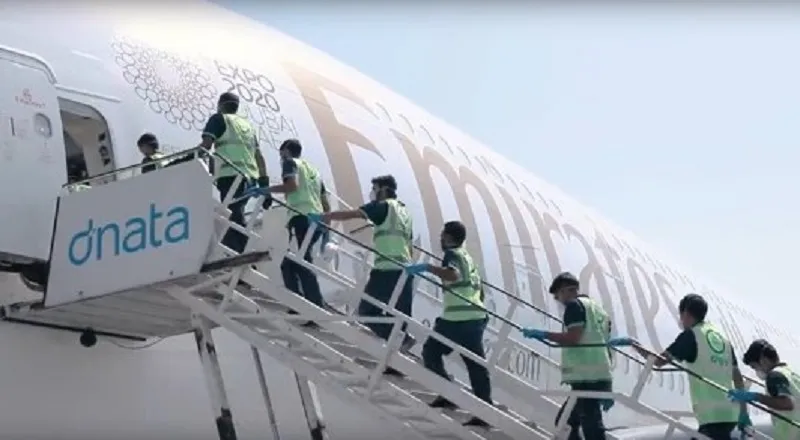
Emirates Group posts massive $US3.8 billion first-half loss
Nov 13, 2020

Emirates Group has reported a significant first-half loss of $3.8 billion, primarily attributed to the ongoing challenges posed by the global pandemic and its impact on the aviation industry. Travel restrictions and reduced passenger demand have severely affected airline operations, leading to reduced revenues. Despite efforts to cut costs and adapt to the changing environment, the financial strain remains substantial. The group is focused on recovery strategies and rebuilding its market position as air travel gradually resumes. This financial setback underscores the broader difficulties facing the aviation sector during these unprecedented times.
Financial Overview of Emirates Group
The Emirates Group has reported a staggering first-half loss of $US3.8 billion for the fiscal year, a significant downturn that reflects the ongoing challenges faced by the aviation and travel sectors due to the COVID-19 pandemic. This financial deficit marks one of the largest losses in the company's history, highlighting the severe impact of global travel restrictions and reduced passenger demand.
Key Financial Metrics
To better understand the financial health of Emirates Group, let's take a look at some key financial metrics from the recent report:
| Metric | Value |
|---|---|
| Total Revenue | $US3.2 billion |
| Net Loss | $US3.8 billion |
| Passenger Numbers | 1.5 million |
| Capacity Utilization | 40% |
Reasons Behind the Loss
The Emirates Group's massive loss can be attributed to several factors, primarily stemming from the ongoing effects of the pandemic. Some of the key reasons include:
- Travel Restrictions: Government-imposed travel restrictions have significantly limited the number of passengers, leading to lower revenues.
- Increased Operational Costs: Compliance with health and safety protocols has increased operational costs, further straining the financial position.
- Reduced Demand: A global decline in travel demand has left many airlines struggling to fill seats, adversely affecting profitability.
- Market Competition: Intense competition among airlines for a reduced number of passengers has led to price wars, further diminishing profit margins.
Cost-Cutting Measures
In response to these unprecedented losses, the Emirates Group has initiated various cost-cutting measures aimed at stabilizing the financial situation. Some of the strategies include:
- Fleet Management: The company is evaluating its fleet and considering retirement of older aircraft to reduce maintenance costs.
- Workforce Optimization: Reductions in staffing and voluntary redundancy programs have been implemented to lower labor costs.
- Operational Efficiency: Streamlining operations and improving fuel efficiency are key components of the cost-reduction strategy.
- Focus on Cargo Operations: With passenger flights reduced, a greater emphasis on cargo operations has been adopted to generate additional revenue.
Future Outlook
Despite the heavy losses, the Emirates Group remains optimistic about the future. The management is focusing on a phased recovery as global travel restrictions ease. Some key aspects of the future outlook include:
- Vaccine Rollout: The global vaccination efforts are expected to boost passenger confidence and demand for air travel.
- Market Adaptation: The company is adapting its services to meet changing consumer preferences, including flexible booking options and enhanced safety measures.
- Investment in Technology: Embracing digital transformation to improve customer experience and operational efficiency is a priority for the Emirates Group.
- Strategic Partnerships: Collaborating with other airlines and stakeholders in the travel sector to enhance recovery efforts and share resources.
Conclusion
In summary, the Emirates Group's $US3.8 billion loss in the first half of the fiscal year underscores the severe impact of the pandemic on the aviation industry. The company is taking decisive actions to address the challenges it faces, including cost-cutting measures and strategic investments for future growth. As the world begins to recover from the pandemic, the Emirates Group is positioning itself for a rebound, anticipating a gradual return to profitability as travel demand picks up.
As the situation evolves, stakeholders will be closely monitoring the Emirates Group's performance and recovery strategy, looking for signs of stabilization and growth in a post-pandemic world.
Related Articles

Explore Thailand: The Best Islands to Visit for Paradise, Adventure, and Relaxation

The Ultimate Guide to the Best Islands in Thailand for Your Next Getaway

Do babies need passports? How to get a passport for a newborn

How to get a U.S. passport fast: here’s how to expedite the process

What is Mobile Passport Control: 5 reasons why you should use it

SENTRI vs. Global Entry: A detailed guide

Do you need a passport to go to the Bahamas? Let’s find out

Do you need a passport to go to Mexico? A detailed guide

Do you need a passport to go to Canada? We got the answer

Do You Need a Passport for a Cruise: An Essential Travel Guide

Booster Seat Requirements: All the Rules to Follow in Your Rental Car

What Are the World’s Most Powerful Passports, and How Does Yours Rank?

How to Take a Passport Photo at Home: A Helpful Guide

You've got to have heart! Southwest's new livery

Your opinion: Should water be free on low cost carriers?

Young women bolder than guys as solo travellers
